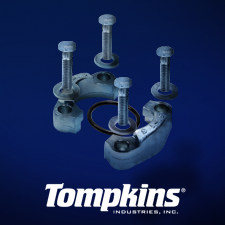Manufacturing remains in 2.5-year contraction mode
Economic activity in the manufacturing sector contracted in July for the fifth consecutive month, following a two-month expansion that was preceded by 26 straight months of contraction, say the nation’s supply executives in the latest Manufacturing ISM Report On Business.
The report was issued today by Susan Spence, MBA, chair of the Institute for Supply Management (ISM) Manufacturing Business Survey Committee:
“The Manufacturing PMI registered 48% in July, a 1-percentage point decrease compared to the 49% recorded in June. The overall economy continued in expansion for the 63rd month after one month of contraction in April 2020. (A Manufacturing PMI above 42.3%, over a period of time, gen-erally indicates an expansion of the overall economy.) The New Orders Index contracted for the sixth month in a row following a three-month period of expansion; the figure of 47.1% is 0.7 percentage point higher than the 46.4% recorded in June. The July reading of the Production Index (51.4%) is 1.1 percentage points higher than June’s figure of 50.3%. The Prices Index remained in expansion (or ‘increasing’) territory, registering 64.8%, down 4.9 percentage points compared to the reading of 69.7% reported in June. The Backlog of Orders Index registered 46.8%, up 2.5 percentage points compared to the 44.3% recorded in June. The Employment Index registered 43.4%, down 1.6 percentage points from June’s figure of 45%.
“The Supplier Deliveries Index indicated faster delivery performance after seven consecutive months in expansion (or ‘slower’) territory. The reading of 49.3% is down 4.9 percentage points from the 54.2% recorded in June. (Supplier Deliveries is the only ISM Report On Business index that is inversed; a reading of above 50% indicates slower deliveries, which is typical as the economy improves and customer demand increases.) The Inventories Index registered 48.9%, down 0.3 percentage point compared to June’s reading of 49.2%.
“The New Export Orders Index reading of 46.1% is 0.2 percentage point lower than the reading of 46.3% registered in June. The Imports Index registered 47.6%, 0.2 percentage point higher than June’s reading of 47.4%. ”
Spence continues, “In July, U.S. manufacturing activity contracted at a faster rate, with declines in the Supplier Deliveries and Employment Indexes contributing as the biggest factors in the 1-percentage point loss of the Manufacturing PMI.
“The demand indicators improved, with the New Orders and Backlog of Orders indexes contracting at slower rates, while the Customers’ Inventories and New Export Orders indexes contracted at slightly faster rates. A ‘too low’ status for the Customers’ Inventories Index is usually considered positive for future production.
“Regarding output, the Production Index increased month over month to move further into expansion territory, however; the Employment Index dropped further into contraction as panelists indicated that managing head count is still the norm at their companies, as opposed to hiring. The mixed indicators in output suggest companies still being cautious in their hiring even with an increase in production.
“Finally, inputs (defined as supplier deliveries, inventories, prices and imports), on net, declined fur-ther into contraction territory. The Inventories Index moved marginally further into contraction territory after expanding in April, as companies work to reduce or adjust inventory to better align with demand. The Supplier Deliveries Index indicated faster deliveries as supply chain performance improved and sluggish demand continued. Prices continued to increase, but at a slower rate. The Imports Index remained in contraction but moved upward slightly.
“Looking at the manufacturing economy, 79% of the sector’s gross domestic product (GDP) contract-ed in July, up from 46% in June. Notably, 31% of GDP is strongly contracting (registering a composite PMI of 45% or lower), up from 25% in June. The share of sector GDP with a PMI at or below 45% is a good metric to gauge overall manufacturing weakness. Of the six largest manufacturing industries, none expanded in July, compared to four in June,” says Spence.
The seven manufacturing industries reporting growth in July — listed in order — are: Apparel, Leather & Allied Products; Plastics & Rubber Products; Nonmetallic Mineral Products; Textile Mills; Miscellane-ous Manufacturing; Furniture & Related Products; and Primary Metals. The 10 industries reporting contraction in July — in the following order — are: Printing & Related Support Activities; Paper Prod-ucts; Chemical Products; Machinery; Wood Products; Fabricated Metal Products; Computer & Electronic Products; Transportation Equipment; Electrical Equipment, Appliances & Components; and Food, Beverage & Tobacco Products.
WHAT RESPONDENTS ARE SAYING
• “Fairly flat quarter over quarter, but with us being in the safety and security sector (and with U.S. Customs and Border Protection as a customer), the recent bill that passed should result in an in-crease in business in the coming months.” [Computer & Electronic Products]
• “Sales continue at unprecedented growth, driven by data-center construction. Customers and the sales team continue to demand lower pricing, which drives down gross margins in face of input price increases, primarily from aluminum imports.” [Chemical Products]
• “These tariff wars are beginning to wear us out. It’s been very difficult to forecast what we will pay in duties and calculate any cost savings we’ve had this year. Also, tariffs have disrupted our cus-toms import bond. There is zero clarity about the future, and it’s been a difficult few months trying to figure out where everything is going to land and the impact on our business. So far, tremen-dous and unexpected costs have been incurred.” [Apparel, Leather & Allied Products]
• “Currently, higher interest rates still depress the construction industry for new construction pro-jects. Tariff policies are uncertain, which slows down (1) our investment in new projects, (2) com-ponent sourcing for new products, (3) blanket orders and (4) replenishment of large inventory quantities. Instead, we’re working to shift suppliers to lower political risk countries or develop domestic sources. We are impacted by the higher tariffs on costs of raw materials and components both sourced domestically and from overseas, and we expect expenses will be higher in the third and fourth quarters as we consume the inventory received with new and higher tariffs or update costs from domestic sources in the second quarter.” [Machinery]
• “Sales softening more than usual during the summer. Negotiations with non-U.S. manufacturers are strained as we are reluctant to issue POs for deliveries three or more months into the future with prices that include current tariffs.” [Fabricated Metal Products]
• “In the health-care world we continue with ‘business as normal,’ but we are increasingly searching and assessing geopolitical risk mitigation options.” [Miscellaneous Manufacturing]
• “Tariffs are causing complete uncertainty around sourcing strategies. A sit-and-wait game for now.” [Electrical Equipment, Appliances & Components]
• “Sales are about on par with 2024, but nowhere near budget forecast. Tariff concerns seem to be growing as the year progresses.” [Nonmetallic Mineral Products]
• “Business is steady, with solid bookings and backlog. Still uncertainty about tariffs and associated inflation.” [Furniture & Related Products]
• “Energy capacity, specifically in the grid operated by PJM Interconnection, continues to be one of the major concerns for business continuity and growth in this region. The procurement of power and rising natural gas prices in this region due to past green energy policies, coupled with future projected allocations for artificial intelligence data centers, adds additional stress to the PJM sys-tem.” [Primary Metals]
• “Cautiously stable. Tariff impacts are still being monitored. Some increases have been implemented while monitoring other products.” [Transportation Equipment]












